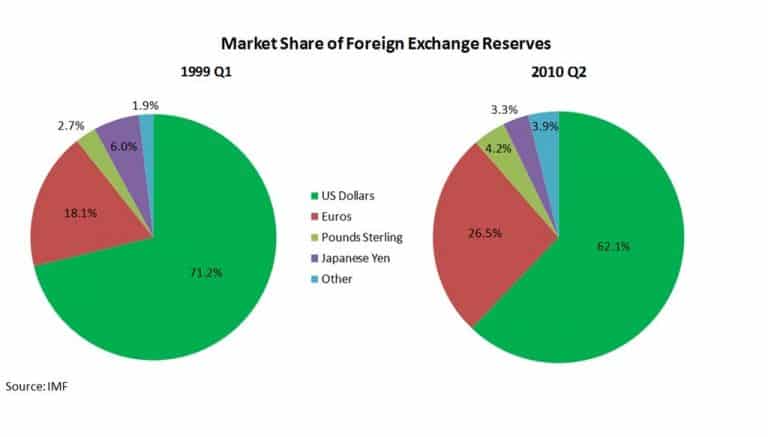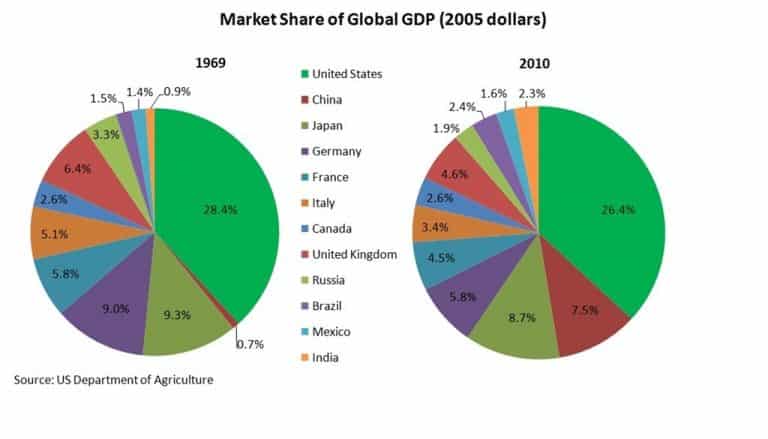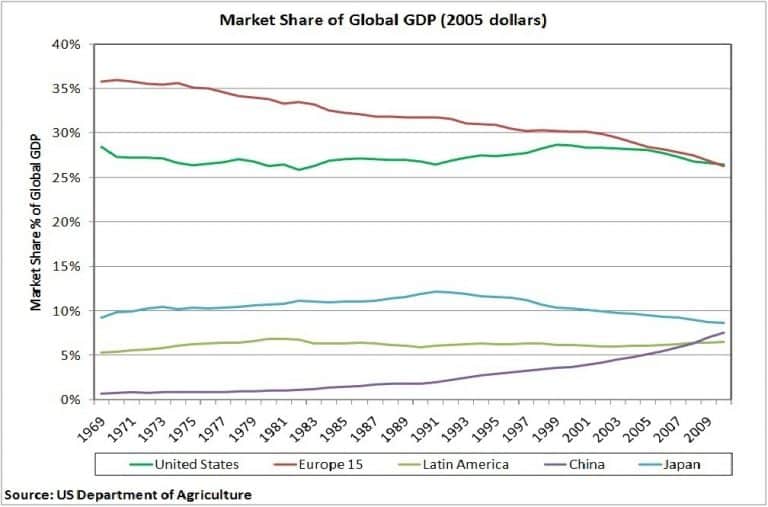Chart of the Day: Market Share of GDP and Foreign Exchange Reserves
By Annaly Capital Management
The news flow of the last several weeks has centered around several very big issues: American structural budget deficits and the new tax agreement being hammered out in Washington DC, the bailout of Ireland and the precedent it may set for other European countries, fiat money vs. hard money, sovereign ratings downgrades, the growth and inflation policy objectives in China, bank capital adequacy from stress tests to Basel III and central bank responses to economic weakness. Flow is the operative word here, as with issues like these there really is never a culminating event. The statement put out today by the European Union on a new currency stability mechanism, is no different. The key section: “The Member States whose currency is the euro may establish a stability mechanism to be activated if indispensable to safeguard the stability of the euro as a whole. The granting of any required financial assistance under the mechanism will be made subject to strict conditionality.” This statement might seem like the culmination of a debate, but it can also be viewed as a part of the historical imperative of European Union, its manifest destiny if you will.
We have long believed that unless and until the “member states whose currency is the euro” started moving towards a stronger socio-economic connection it would become more and more difficult to hold the euro together. The closest analogue we can think of is “the member states whose currency is the dollar.” Does not the US have significant economic disparity between weak states and strong states? Does not the US have significant cultural differences between north and south, east and west? And do not the member states of the American union have a shared interest in safeguarding the stability of the dollar despite our economic and cultural differences?
Whether or not we are witnessing the end of the debate in Europe or simply another milestone on the way to The United States of Europe is a question for a dissertation, not a blog. In the meantime, these questions lead us to consider the current global monetary standing of “the member states whose currency is the dollar.” Below is the shrinking market share of the US Dollar as the world’s reserve currency since 1999…and the growth of the euro.
Below is the United States’ shrinking market share of global GDP (in constant dollars) currency since 1969…and the growth of China and India.
These are all changes that have occurred along the sweep of economic history, and for relatively short intervals at that. Far be it for us to draw conclusions on such large matters with such little data, but here are two: historical secular trends are hard to stop, and one of the greatest global economic advantages is scale. This asset is indispensable and should be protected. History-obsessed Europe, with its statement today, perhaps sees this trend and is acting accordingly.



Comments are closed.